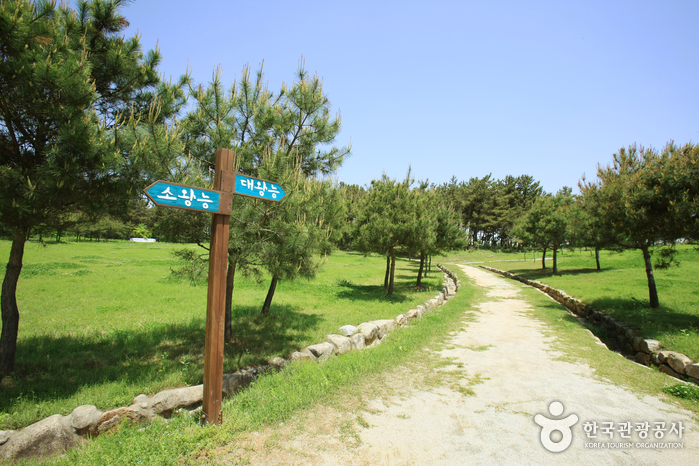Project M [Tax Refund Shop] (프로젝트엠)
19.2Km 0 2024-06-27
387, Baekjemun-ro, Gyuam-myeon, Buyeo-gun, Chungcheongnam-do
-
KODAK - Lotte Outlets Buyeo Branch [Tax Refund Shop] (코닥 롯데아울렛 부여점)
19.2Km 0 2024-06-26
387, Baekjemun-ro, Gyuam-myeon, Buyeo-gun, Chungcheongnam-do
-
Yeonsan Halmeoni Sundae (원조연산할머니순대)
19.5Km 18633 2024-02-28
1525 Hwangsanbeol-ro, Yeonsan-myeon, Nonsan-si, Chungcheongnam-do
Yeonsan Halmeoni Sundae is a sundae specialty restaurant located near Yeonsan Market. It has been passed down for four generations, insisting on the traditional taste. The representative menu is sundae gukbap (sundae and rice soup), which puts sundae and various internal organs in a milky broth. The broth is made by boiling pork bones, and the sundae is handmade using only pure pork blood and green onions. They also offer a sundae jeopsi (assorted sundae) and ttaro gukbap (rice and soup).
Seocheon Dalgogae Mosi Village (서천 달고개모시마을)
19.6Km 20691 2021-03-10
5, Hwahan-ro 504beon-gil, Seocheon-gun, Chungcheongnam-do
+82-41-950-6380
In Seocheon Dalgogae Mosi Village, the long-standing tradition of Hansan mosi (ramie fabric) is passed down and preserved in the hands of the village women. Hansan mosi is also called fine ramie because of the time-consuming and labor-intensive process involved. The village offers a variety of mosi-themed experience programs for visitors with the help of experienced village artisans. Programs include ramie plant harvesting and ramie fabric weaving. Visitors can also try some highly nutritious ramie rice cakes and tea.
Iksan Ssangneung (익산 쌍릉)
19.8Km 15002 2024-04-07
Seogwang-dong, Iksan-si, Jeonbuk-do
+82-63-859-5792
The Ssamgneung (Twin Tombs) in Iksan are stone chamber tombs that were unearthed during an academic excavation survey in 1917. At the time of the survey it was discovered the tombs had already been illegally excavated, most likely during the reign of King Chungsukwang of the Goryeo dynasty. Though looters had stripped the tombs of any burial accessories, the wooden coffins were found to be relatively intact.
The coffins were severely damaged in the aftermath of the Korean War, but were later restored by the Jeonju National Museum. When they were first found, the twin tombs measured 3.1 meters high and 0.5 kilometers wide, but some of the original wood was lost during the tombs’ tumultuous history and the restoration that followed. The larger of the restored tombs now measures 30 meters in diameter and 5 meters in x_height while the smaller tomb measures 24 meters in diameter and 3.5 meters in x_height. On January 21, 1963 the tombs were designated Historic Site No. 87.
The Twin Tombs are roughly 200 meters apart, with the tomb in the east called Daewangmyo (big royal tomb) and the one in the west Sowangmyo (small royal tomb). The interiors of the tombs are done in the same style as the stone chamber tombs found in the tomb cluster of Neungsan-ri, Buyeo. Considering that the nearby Mireuksaji Temple Site was built during the reign of King Mu of Baekje dynasty, it is highly likely that the Twin Tombs are those of King Mu and his wife, Queen Seonhwa.
![Project M [Tax Refund Shop] (프로젝트엠)](http://tong.visitkorea.or.kr/cms/resource/65/3314365_image2_1.jpg)
![KODAK - Lotte Outlets Buyeo Branch [Tax Refund Shop] (코닥 롯데아울렛 부여점)](http://tong.visitkorea.or.kr/cms/resource/39/3313339_image2_1.jpg)


 English
English
 한국어
한국어 日本語
日本語 中文(简体)
中文(简体) Deutsch
Deutsch Français
Français Español
Español Русский
Русский